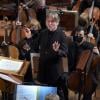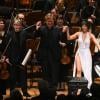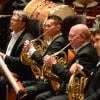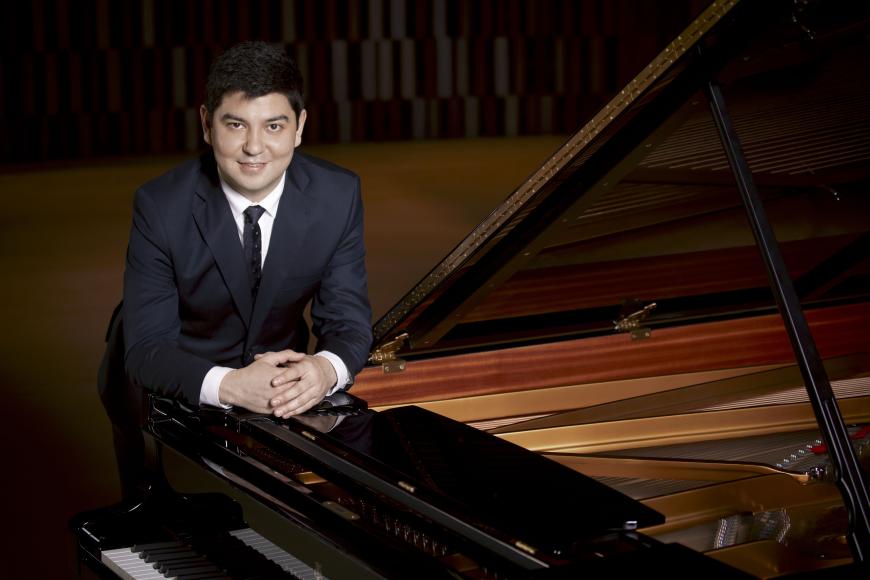
Like baseball fans who bring their gloves to the game, two listeners in the terrace section behind the stage of Davies Symphony Hall came prepared on Friday, Nov. 4. As the ovation for the Uzbek pianist Behzod Abduraimov thundered down — he had just launched the musical equivalent of a grand slam in Sergei Prokofiev’s Piano Concerto No. 2 with the San Francisco Symphony as his adept teammates — the pair waved miniature flags of the artist’s native country. When Abduraimov spotted and acknowledged them, the audience joined in with a fresh jolt of delighted cheers. In the alchemy that a great performance can produce, the soloist had united a houseful of strangers into celebrants in the borderless nation of music.
And a great performance this certainly was — gorgeously, dazzlingly, even preposterously so. Any pianist who takes on the piece, surely one of the most technically and artistically demanding concertos in the repertoire, must scale a fiendishly, almost ridiculously challenging edifice. Through its four movements, Prokofiev deals out densely chorded passagework, keyboard-spanning leaps, a hummingbird-fleet Scherzo, feathery pianissimos, brooding lyricism, and multiple discursive cadenzas.
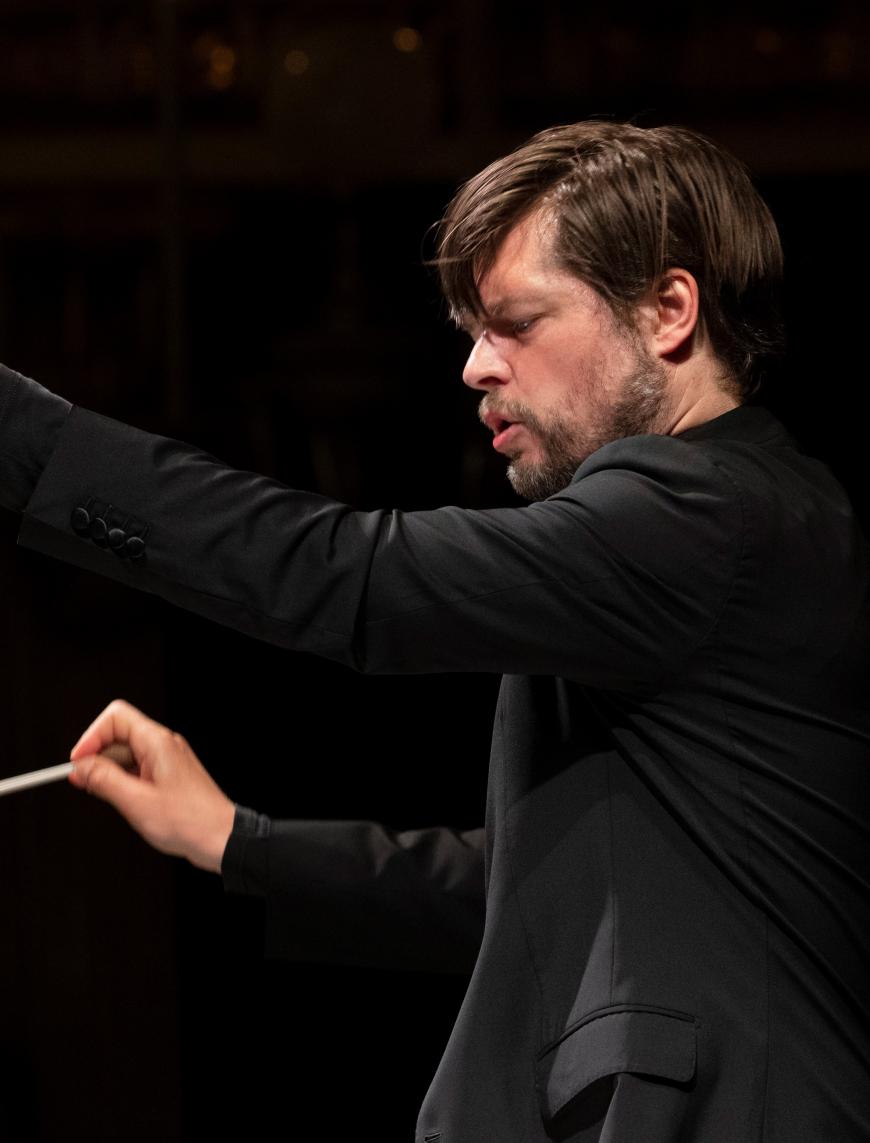
Abduriamov, who at 32 could pass for 22, signaled his confident command of the material from the start, gliding through a stately, elegant opening into an early cadenza rich with musing inner voices. Under the Slovakian conductor Juraj Valčuha, music director of the Houston Symphony, the orchestra responded with vigor, lushness, and pointed touches of color. An early chromatic conversation between the piano and bassoon brought out the wit in the score.
As he headed for the second, much larger cadenza, featuring thematic development and finger-busting passagework worthy of a freestanding sonata, Abduraimov used his slashing attacks and rueful reconsiderations to capture a burlesque vein in the work. The mighty cadenza covered the spectrum from turbulent to pensive to ferociously cathartic. Gentle pizzicati in the cellos and basses calmed the storm to close this wondrously eventful movement.
The fleet Scherzo flew by in a romp of chattering chords, flittering high notes, and whirling figurations. Valčuha, a fluid, balletically expressive presence on the podium, opened the third movement, Intermezzo, with a pompous mock grandeur in the woodwinds and brass. With the soloist responding in kind, now trudging like a heavy-footed beast, now swinging into a winsome dance meter, the composer’s theatrical flair blossomed. More discoveries came in the closing movement, a poignant and propulsive meditation on an entrancing theme.
Even after all that had come before, the Finale had more to give, from an intimate exchange between the piano and cellos to a blaring exclamation from the tuba. Abduraimov made the most of it all in yet another furious cadenza that felt orchestral in scale and impact, building to a tenderly dawning recapitulation of the theme. After multiple curtain calls, the soloist made heroic work of Franz Liszt’s “La campanella” as an encore. It was a kind of condensed recapitulation of the brilliant and nuanced light he brought to the concerto, a barrage of notes that glittered and shimmered like a river of gold.
The evening opened with Hannah Kendall’s The Spark Catchers (2017), a programmatic work inspired by a poem by Lemn Sissay about an 1888 women’s strike at a London match factory. With its fitfully scattered shards of melody, deployed in unstable rhythms, the piece conjured a sense of pent-up energy. Pizzicati, glockenspiel pings, and eerily sliding strings added atmospheric touches. But the piece never fully ignited or paid off, remaining a collection of largely delicate small effects.
Sergei Rachmaninoff’s Symphonic Dances occupied the second half of the program. After a brusque opening and some harsh overstatement early on, Valčuha led a performance of growing authority and aplomb. A woodwind colloquy, sweetened by an alto saxophone aria, beguiled. The strings were by turns plangent and urgent, their tone digging deep or blooming open. Picking them out like a painter with his palette, Valčuha signaled the contributions of piano and harp, percussion and violin. With his sweeping big gestures, he gathered it all into an eloquent and vivid expression of these splendid dances.


